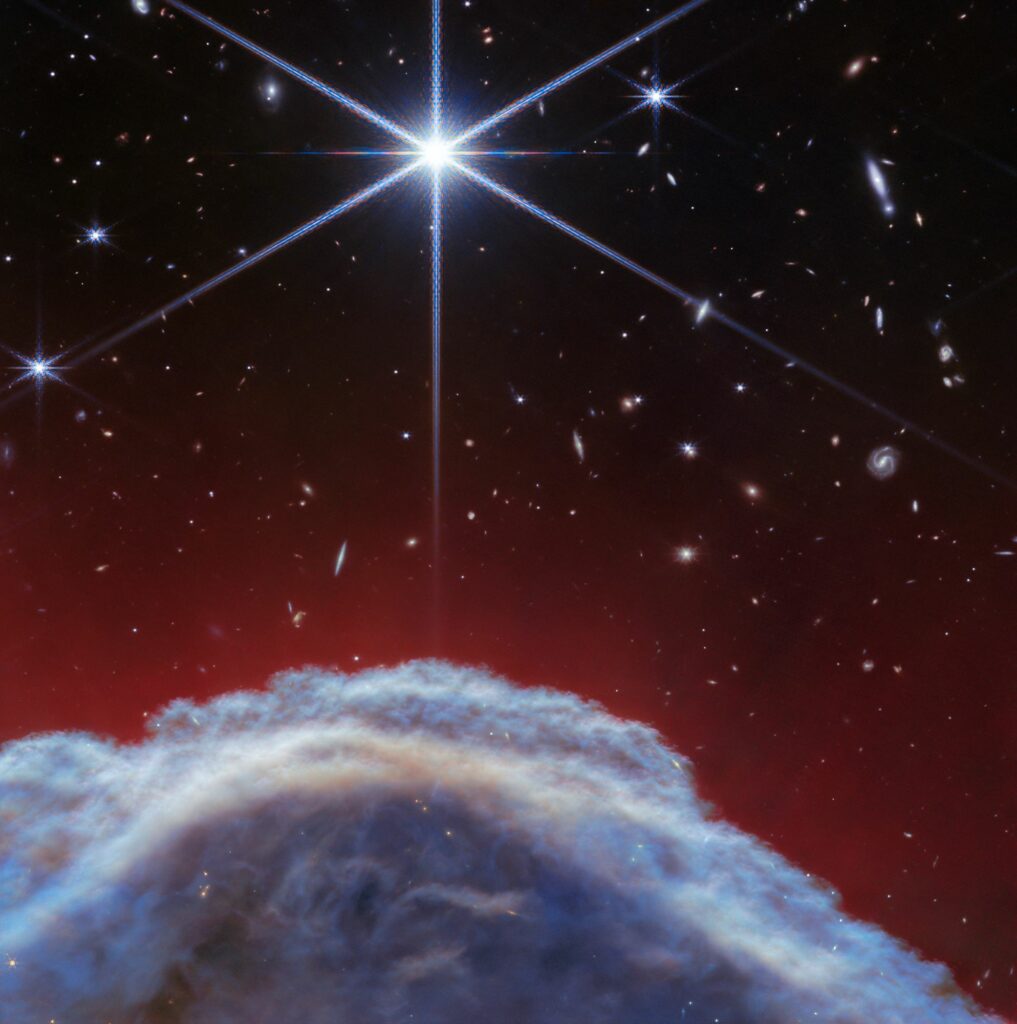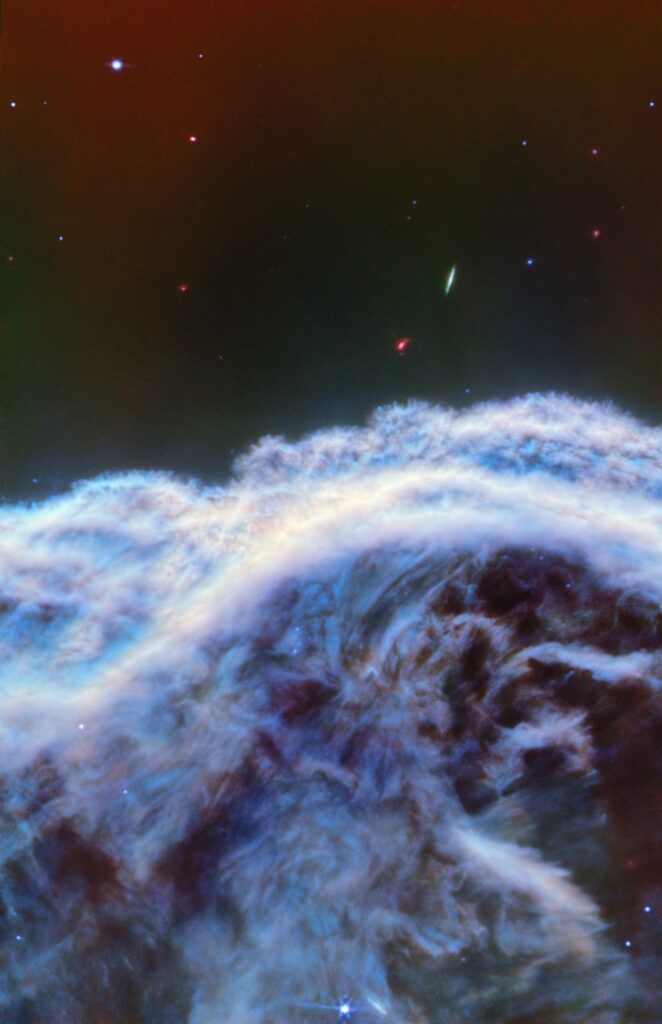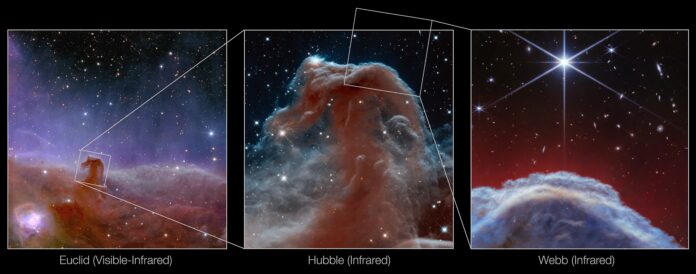Horsehead Nebula- or Barnard 33- formed from a collapsing interstellar cloud of material and glows because a nearby hot star illuminates it. It is roughly 1,300 light-years away on the western side of a dense region known as the Orion B molecular cloud.
The Horsehead’s surrounding gas clouds have already cleared, but the protruding pillar is more resistant to erosion because it is composed of substantial material clumps. Astronomers estimate that the Horsehead will disintegrate in around five million years.
NASA’s James Webb Space Telescope has captured the sharpest infrared images of the Horsehead Nebula. The main focus of Webb’s new picture is the unique dust and gas structure around the lighted edge of the nebula’s top. It shows the top of the “horse’s mane” or edge of this iconic nebula in a new light, capturing the region’s complexity with unprecedented spatial resolution.
One well-known photodissociation region, or PDR, is the Horsehead Nebula. Within this area, the fully ionized gas surrounding the big stars and the clouds they are born is separated by a largely neutral, warm zone of gas and dust created by ultraviolet (UV) light from young, massive stars. This UV radiation greatly influences these regions’ chemistry and also serves as a substantial heat source.

These regions arise when the interstellar gas is sufficiently dense to maintain a largely neutral state but not sufficiently dense to obstruct the transmission of ultraviolet light from big stars. A unique instrument for studying the physical and chemical processes driving the evolution of interstellar matter in our galaxy and throughout the universe, from the early age of intense star formation to the present, is the light emitted from such PDRs.
Because of its proximity and its nearly edge-on geometry, astronomers are interested in Horsehead Nebula to study the physical structures of PDRs, the molecular evolution of the gas and dust within their respective environments, and the transition regions between them.

An international team of astronomers has unveiled the small-scale structures of the lighted edge of the Horsehead for the first time, made possible by Webb‘s MIRI and NIRCam cameras. When the dust cloud evaporates under the influence of UV radiation, the heated gas transports dust particles away from the cloud.
Webb has identified a web of thin characteristics that tracks this movement. The observations have also helped scientists learn more about the nebula’s multidimensional form and how the dust emits and blocks light.
Astronomers’ next task is to study the spectroscopic data obtained to gain insights into the evolution of the physical and chemical properties of the material observed across the nebula.
Journal Reference:
- A. Abergel, K. Misselt, K.D. Gordon, A. Noriega-Crespo, P. Guillard, D. Van De Putte, A.N. Witt, N. Ysard, M. Baes, H. Beuther, P. Bouchet, B.R. Brandl, M. Elyajouri, O. Kannavou, S. Kendrew, P. Klassen, B. Trahin. JWST observations of the Horsehead photon-dominated region I. First results from multi-band near- and mid-infrared imaging. Submitted to arXiv, 2024 DOI: 10.48550/arXiv.2404.15816
